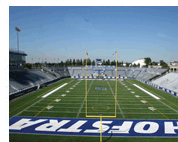A Sailor’s Olympic Hero
Jun 02, 2017Posted by james
Few have heard about Adolph Kiefer. He passed away last month but he left a considerable mark in competitive swimming and with the U.S. Navy.
Adolph was a celebrated swimming champion who won gold with a world-record time as a teenager at the 1936 Berlin Olympics. He reached his peak several years later, and he could have been one of America’s greatest Olympic swimmers. But, World War II took over the world and canceled the 1940 and 1944 Olympics. The war, though, provided Adolph with his greatest satisfaction. His work saved the lives of many U.S. sailors.
Adolph entered the service during 1942 as a naval officer specialist in the physical fitness and swimming division. He quickly was appalled at the number of sailors whose deaths were attributed to drowning. More men died by drowning than gunfire.
With the approval of superiors, Adolph organized swimming and lifesaving instruction for every sailor. No one was permitted to board a ship without taking the 21-hour course. Adolph also helped design lifesaving equipment and created the victory backstroke—with arms extended over the head to form a “V”—that many sailors adopted when they found themselves in the water.
Ironically, Adolph’s career began with a near-drowning accident. He fell into an ice-cold Chicago drainage canal as a child. He did not swim, so he rolled on his back and began kicking his feet until he reached land. Immediately, he enrolled for swimming lessons at the Y.M.C.A. He became devoted to the sport and a champion backstroke swimmer.
A newspaper reporter at the Berlin Olympics wrote that no one who saw him swim could deny that Adolph was the greatest backstroke swimmer. About a decade ago, another sportswriter indicated that Adolph was to the backstroke what Pablo Casals was to the cello.
The cello, as far as I know, never saved a person’s life. The dedication of Adolph Kiefer, however, saved the lives of many American sailors. He faced a challenge as a child and learned from it. His path to fame was blocked by war, but he turned that obstacle into what he cconsidered his “greatest thrill.”









